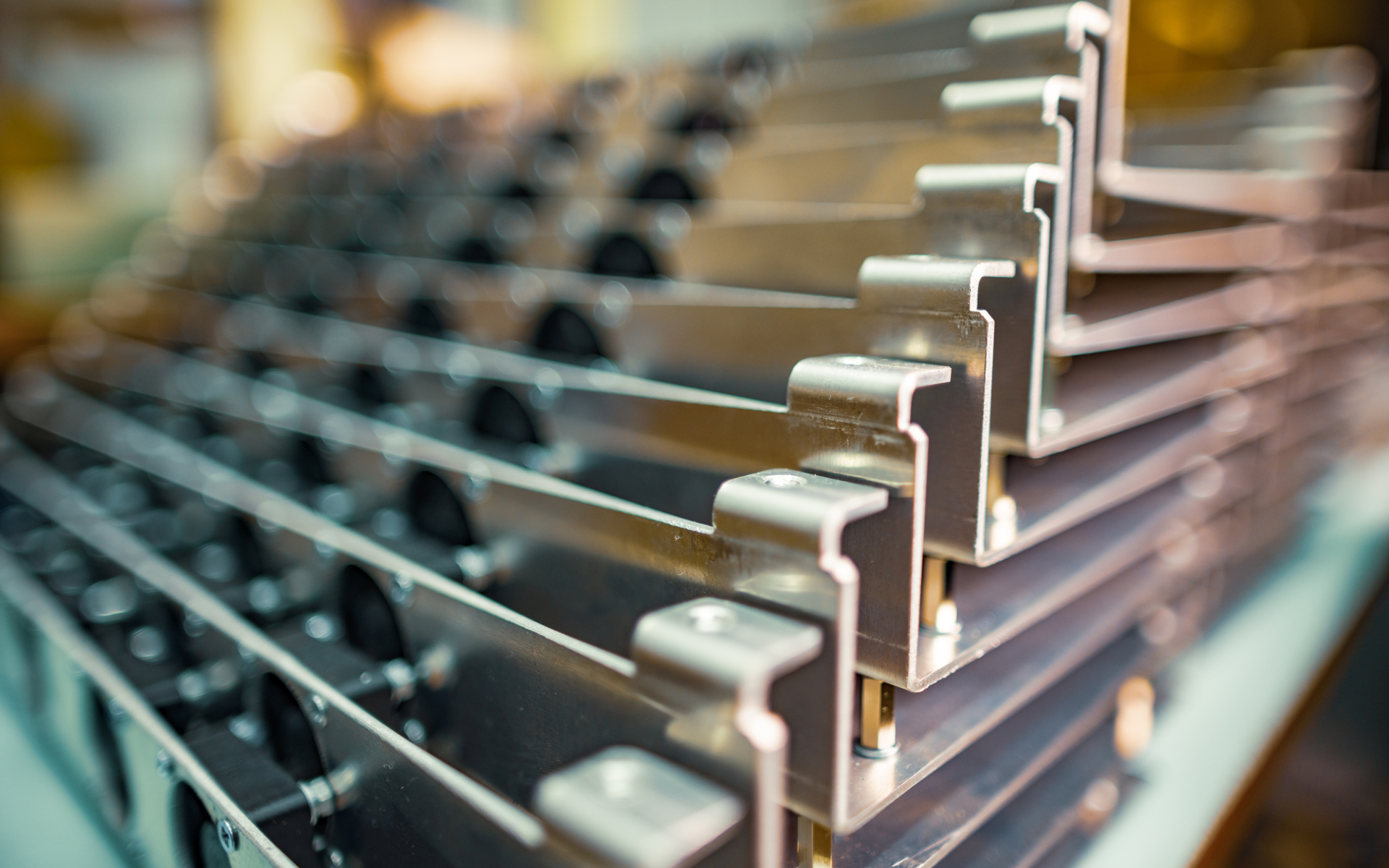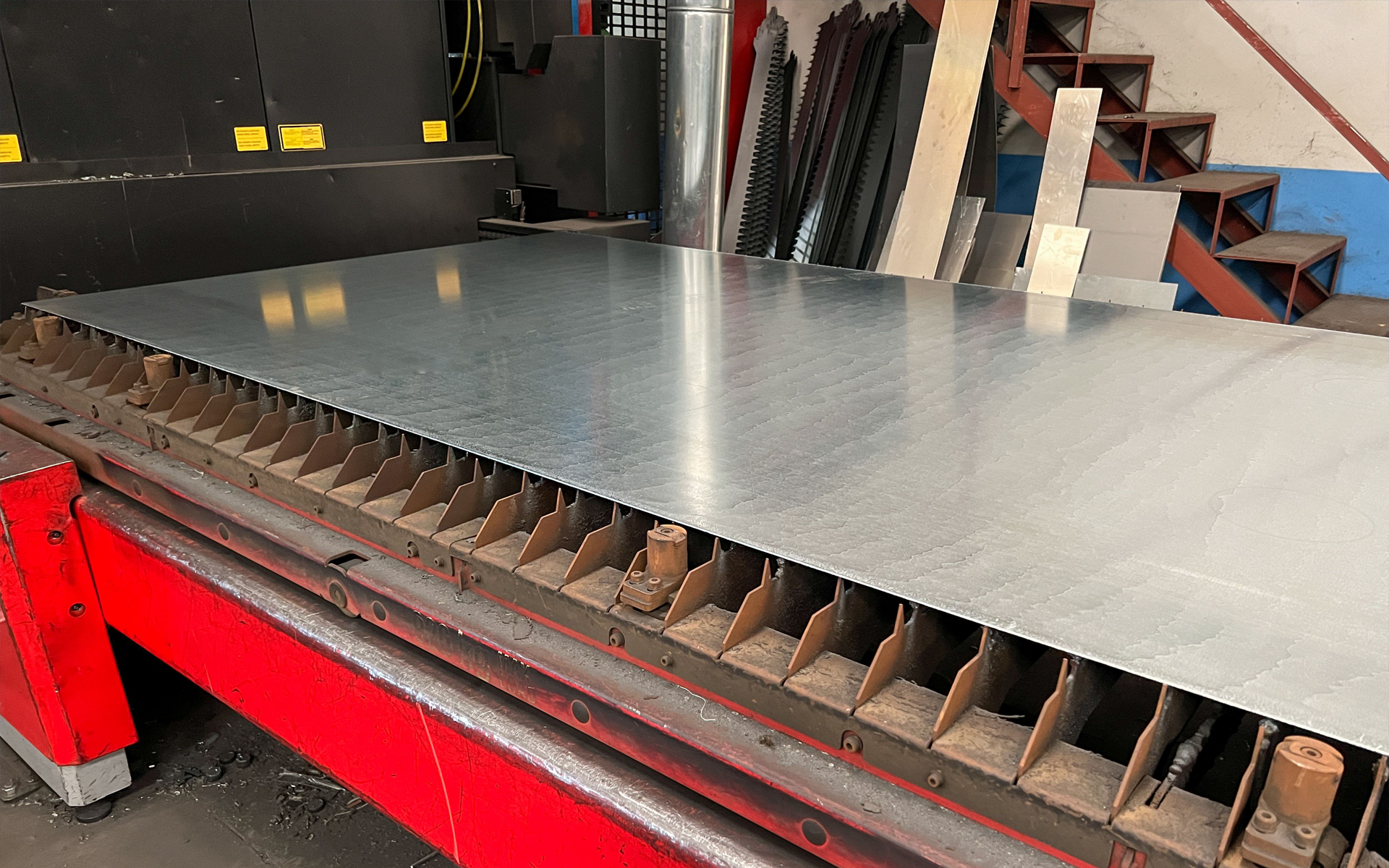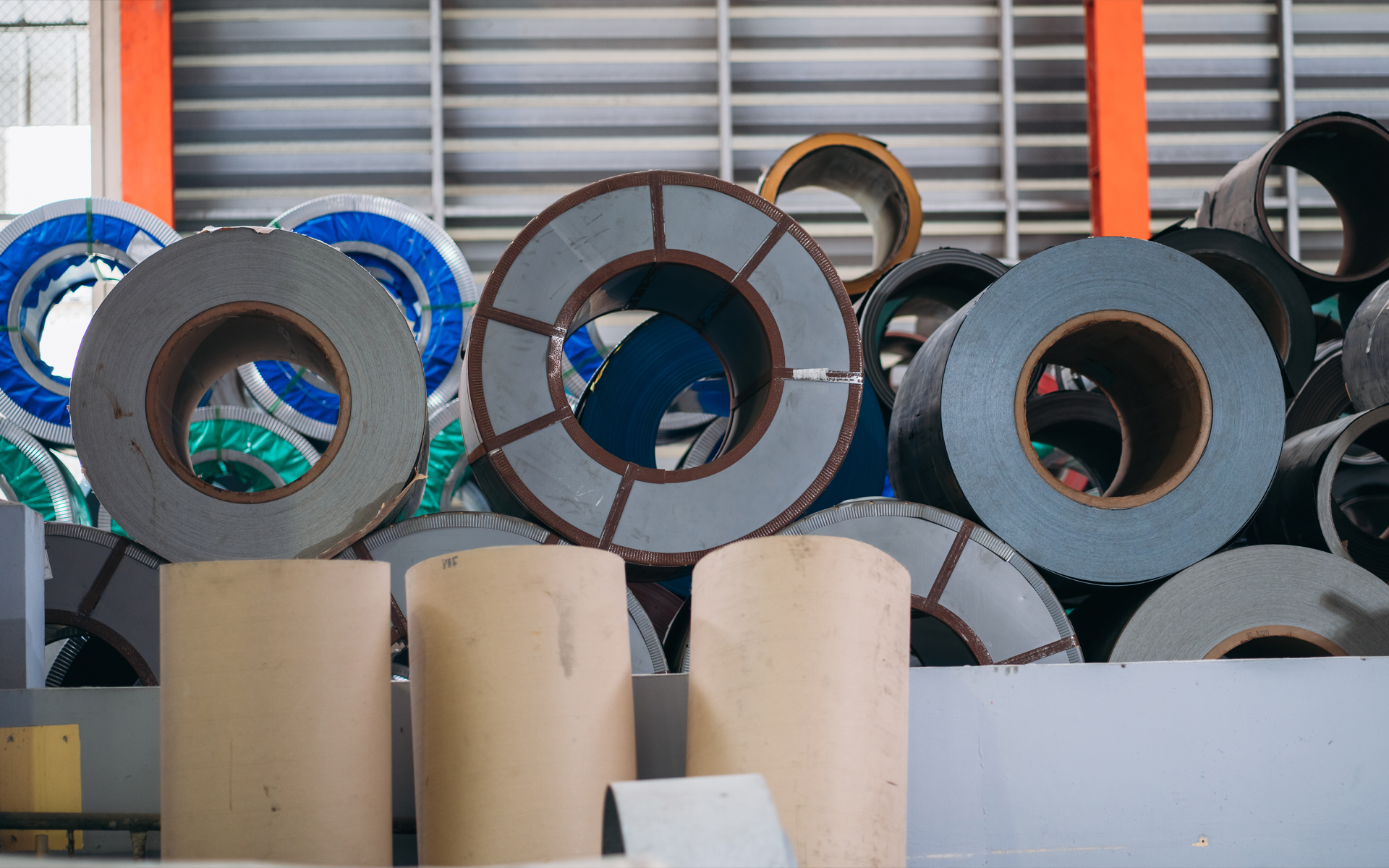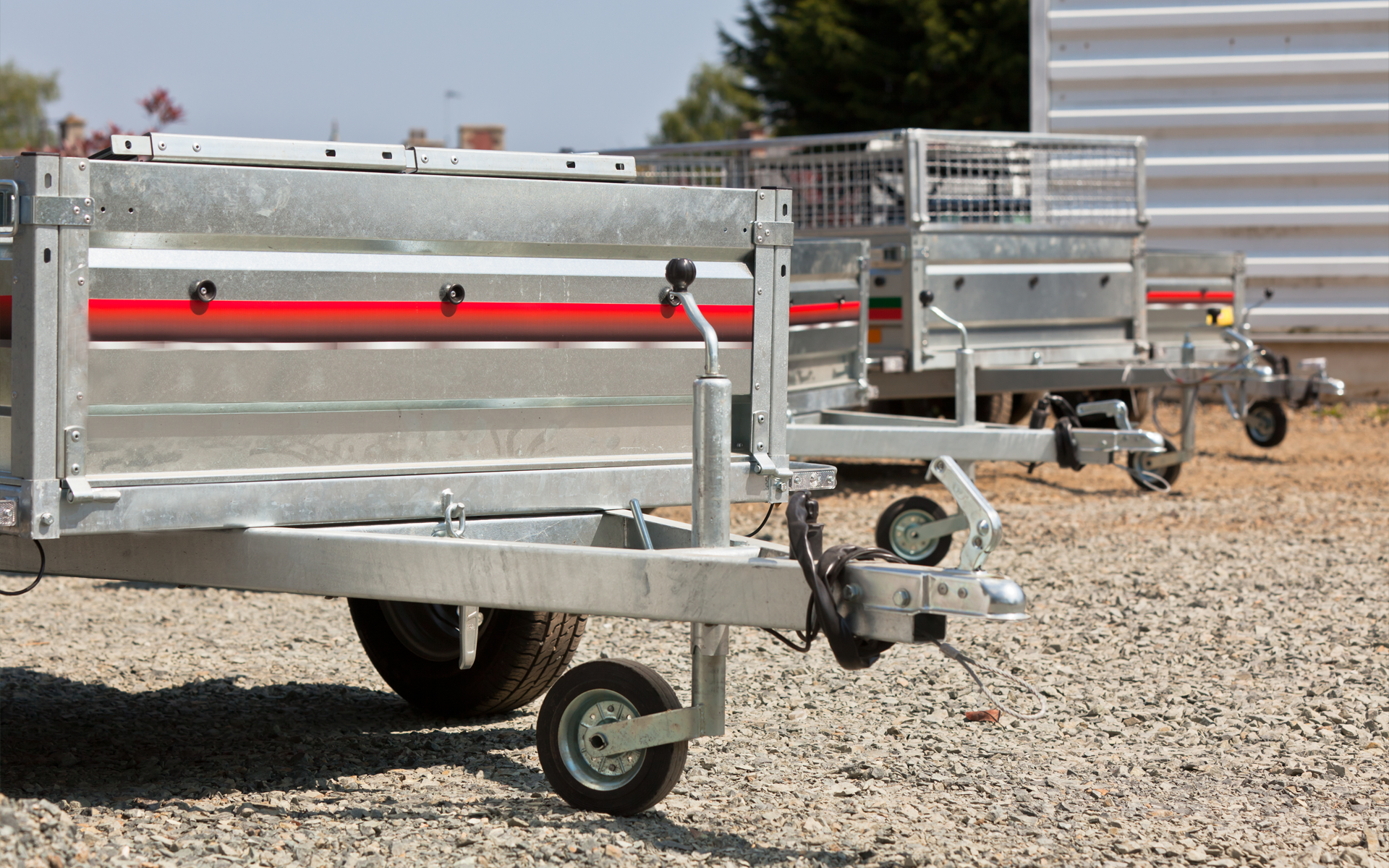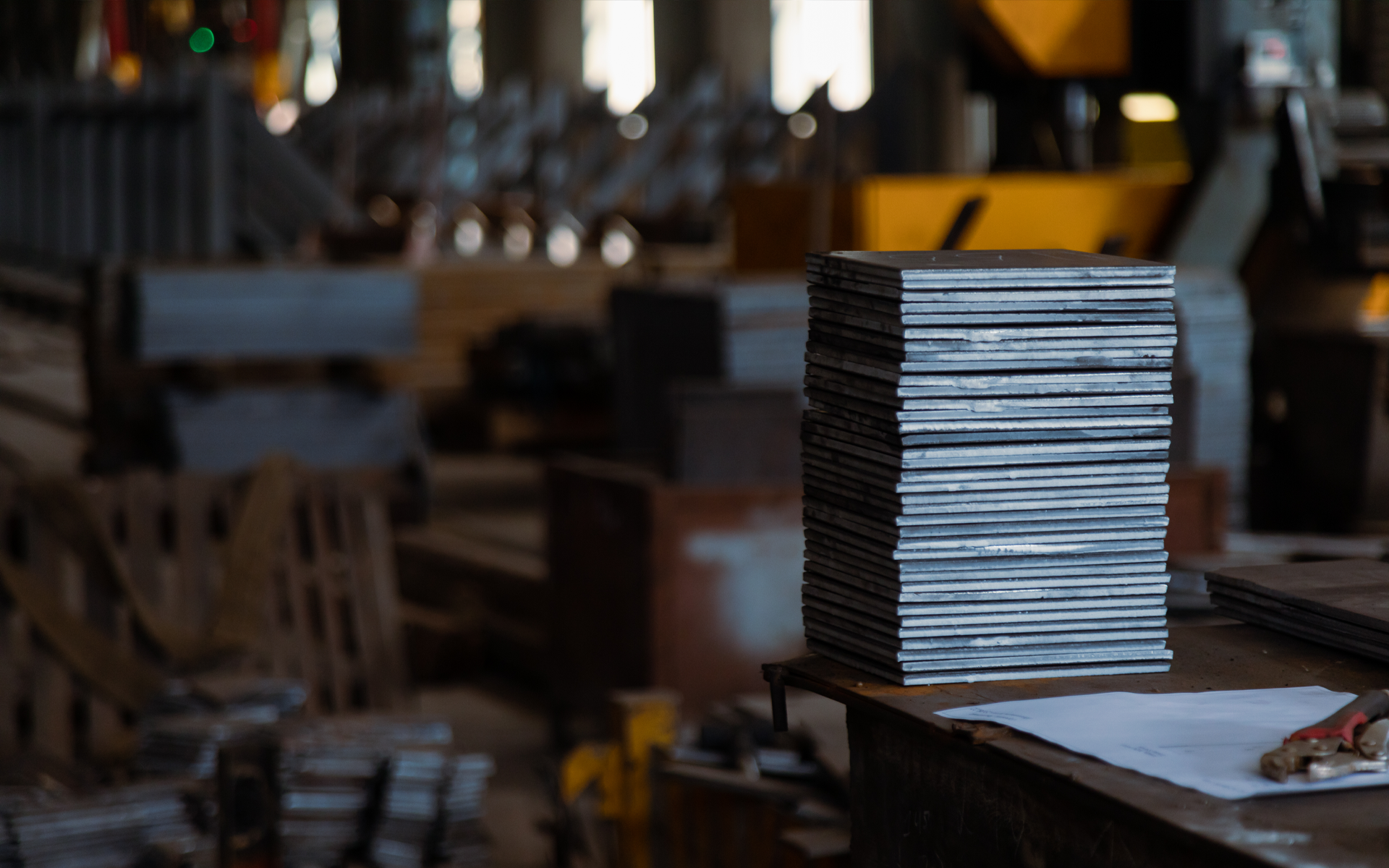Why Flatness and Tolerance Matter in Steel Sheet & Plate
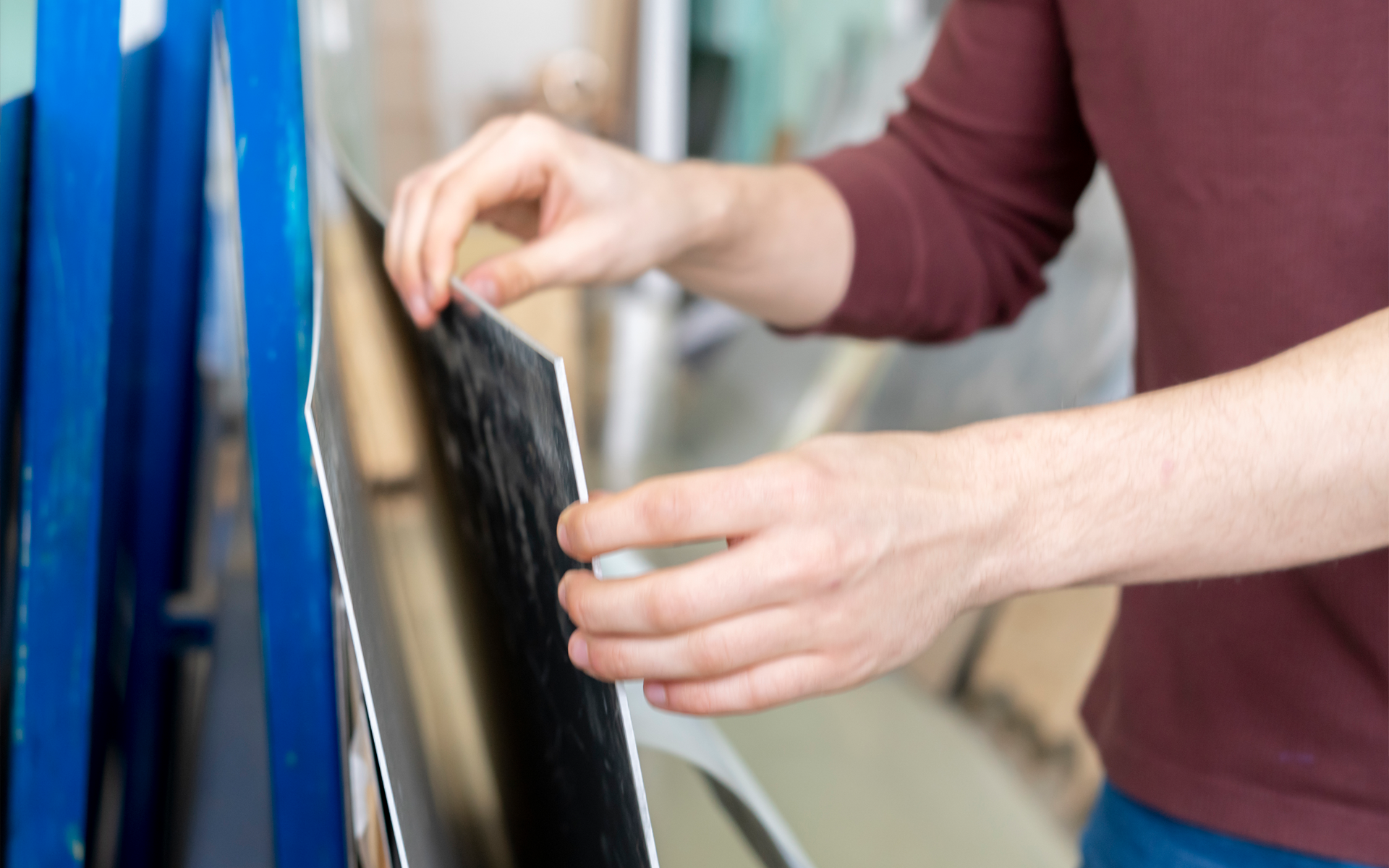
In steel fabrication, few variables impact quality and performance as much as flatness and tolerance. Whether you're laser cutting, bending, stamping, or welding, variations in flatness or inconsistent sheet tolerances can mean rework, scrap, or misalignment during assembly.
At Olympic Steel, we help customers eliminate uncertainty by providing precision processed sheet and plate that meets strict flatness and dimensional tolerances ready to go straight to production. In this guide, we’ll explain what steel flatness really means, how tolerances are defined, why they matter, and how to choose the right material for laser cutting, forming, and more.
What Is Steel Flatness?
Flatness refers to the degree to which a steel sheet or plate lies uniformly in a single plane. In practical terms, it means the absence of:
- Bow – curvature along the length of the sheet
- Camber – curvature along the edge
- Twist – diagonal distortion (like a warped rectangle)
- Wave or Buckle – undulations or ripples in the sheet surface
True flatness is essential for any operation requiring clean contact with a table or press die especially laser or plasma cutting, robotic welding, or precision bending.
What Are Steel Sheet Tolerances?
Tolerances define the acceptable range of variation from the nominal dimension. In sheet and plate steel, this typically includes:
- Thickness Tolerance – how much the material can vary from its specified gauge
- Width and Length Tolerance – especially important for blanks or nested parts
- Flatness Tolerance – measured as the maximum deviation from a flat surface, often over a specified length
Industry standards such as ASTM A6 (for hot rolled plate) and ASTM A1011 (for cold rolled sheet) provide baseline tolerance tables. However, actual requirements often depend on the end-use application.
Common Flatness Issues in Raw Steel
Steel plate and sheet may arrive with flatness issues due to:
- Internal stresses from hot rolling or rapid cooling
- Coil memory (coil set) when sheet is unrolled
- Inconsistent leveling or tensioning during processing
- Residual stress released during cutting or machining
This is why Olympic Steel’s temper passing, leveling, and flattening processes are so important. Our value-added services correct these issues before the material reaches your fabrication line.
Steel Flatness Standards: Typical Tolerances
The table below outlines general flatness tolerances per industry guidelines:
| Product | Thickness | Standard Flatness Tolerance |
|---|---|---|
| Hot Rolled Plate (ASTM A6) | 1/4" – 1" | 1/2" in 96" length |
| Cold Rolled Sheet (A1011) | 16ga – 10ga | 3/8" in 72" length |
| Temper Passed Sheet | 20ga – 10ga | 1/4" in 72" length (or better) |
| Laser Flat Plate | 3/16" – 3/4" | ≤ 1/8" in 72" length (Olympic Steel) |
Note: Olympic Steel often exceeds standard tolerances with our precision flattening equipment, including stretcher leveling and temper pass lines.
Why It Matters for Laser Cutting Readiness
Laser cutters require a consistent standoff between the material and the cutting head. If a steel sheet bows or waves, the laser may lose focus, resulting in:
- Incomplete cuts or poor edge quality
- Higher dross and slag buildup
- Misalignment between nested parts
- Slower cutting speeds to compensate for variance
Laser flat steel from Olympic Steel eliminates this risk by delivering material that sits evenly across the cutting bed, reducing machine downtime and operator adjustment.
Olympic Steel’s Flatness Enhancing Services
To meet today’s fabrication standards, Olympic Steel offers:
- Temper Passed Sheet – For cold rolled, galvanized, or coated material
- Laser Flat Plate Processing – For hot rolled or HRPO steel
- Stretcher Leveling – Removes coil set and stress for flat blanks
- Custom Blank Sizes – With tight dimensional and flatness control
- Plate Flattening – Up to 1" thick and 120" wide
Our goal is to deliver steel that’s production-ready flat, consistent, and within spec every time.
Applications That Demand Flatness
Flatness isn’t just about aesthetics it’s a functional necessity for industries that require precision parts. Olympic Steel serves fabricators and OEMs in:
- Transportation and trailer manufacturing
- Agricultural implements and equipment
- Appliance and enclosure systems
- Architectural and commercial construction
- Heavy equipment and off-road vehicle frames
We help reduce downstream variability and improve fabrication outcomes across every industry.
FAQs: Steel Flatness and Tolerances
What is laser flat steel?
Laser flat steel is specially processed sheet or plate that meets tighter-than-standard flatness tolerances to ensure clean, accurate cutting in laser systems.
What’s the difference between flatness and levelness?
Flatness measures the overall shape of the sheet in all directions, while levelness refers to its ability to lay flush on a table or fixture without rocking or lifting.
Can hot rolled steel be laser flat?
Yes. Olympic Steel uses temper pass and flattening equipment to produce laser-quality flatness in hot rolled plate and HRPO material.
Why is sheet steel sometimes wavy after cutting?
Residual stress released during plasma or laser cutting can distort the material. Pre-flattened or stress-relieved material helps prevent this.
Does temper passed steel improve flatness?
Yes. The temper pass process improves flatness, surface consistency, and eliminates yield point elongation for better forming and cutting.
Final Thoughts
When tolerances are tight and parts must perform, steel flatness is non-negotiable. From cutting tables to press brakes, the quality of your raw material influences everything downstream. Investing in flat, dimensionally consistent steel pays off in better yield, lower scrap, and faster fabrication cycles.
At Olympic Steel, we don’t just supply sheet and plate we deliver steel engineered for precision. Whether you need blanks for high-speed laser cutting or formed parts for tight assemblies, we provide material that meets your specs and exceeds expectations.
Talk to our team today to get the flatness and tolerances your projects demand.
